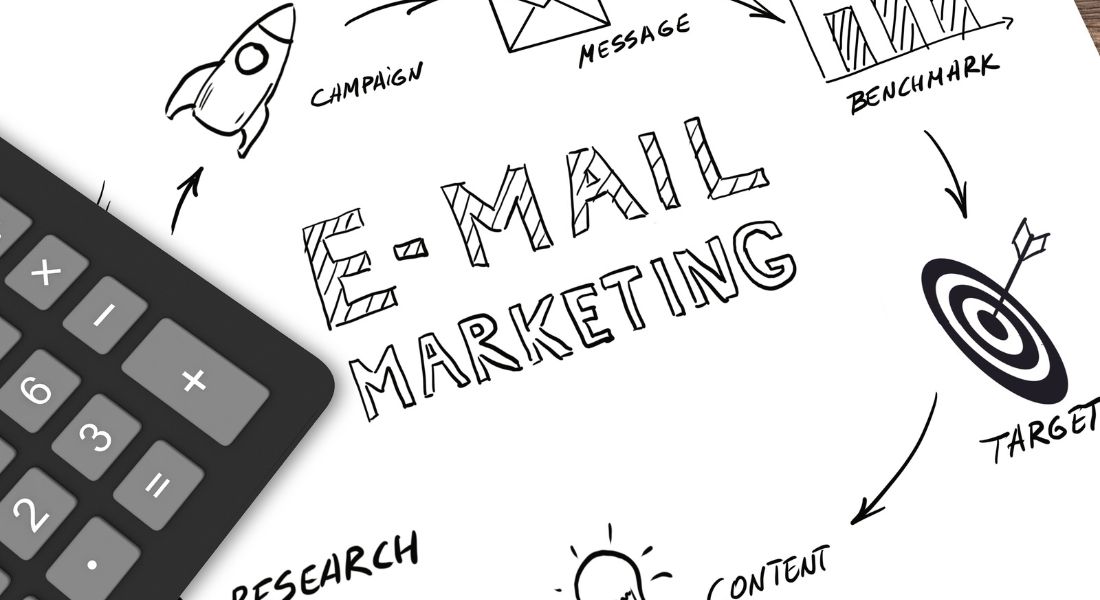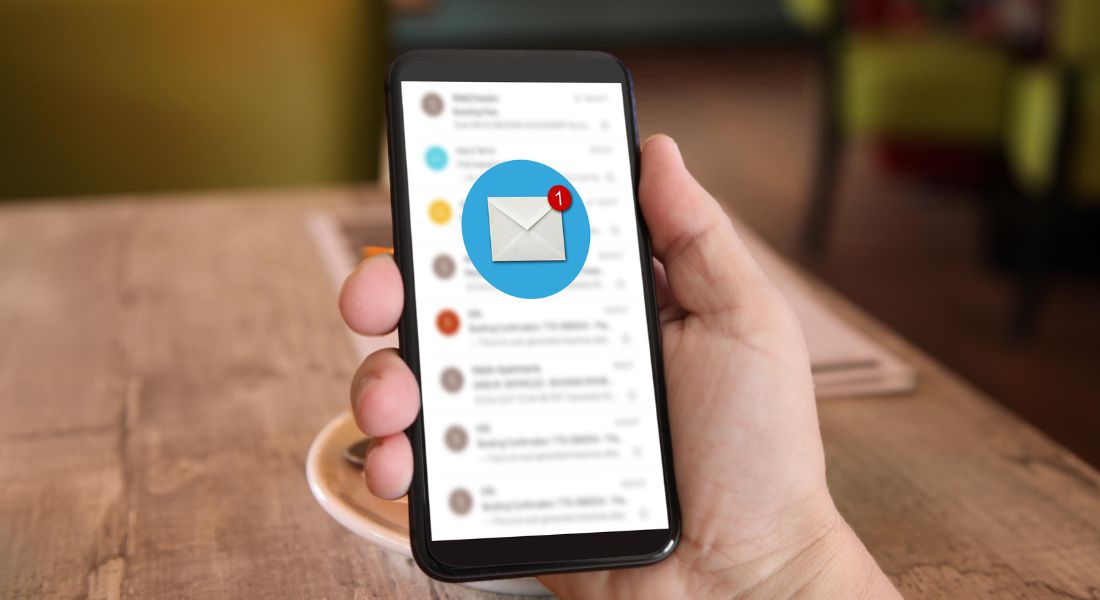Picture this: You’re a master of ceremonies, and you’ve just taken the stage with your unmissable magic trick. The audience is waiting for that awe-inspiring moment as you direct their attention to an ordinary-looking box – but while some are eager to behold the grand revelation, others are losing interest with every passing second. That’s precisely the challenge you face when engaging your audience with email marketing, specifically marketing emails. Fear not, fellow conjurors! It’s time to wave your magical wand and uncover the secrets of creating spellbinding emails. In our Complete Guide to Email Marketing, we will reveal strategic manoeuvres, powerful tactics, and clever tips that will leave your subscribers spellbound and craving more. Every step of the way, you’ll find guidance on creative ways to optimize your product promotion and reach your goal. Transform from an email marketing apprentice to a grand sorcerer now! Our expert team is here to assist you on your journey.
Our Complete Guide to Email Marketing covers everything you need to know about designing, implementing and optimising successful email campaigns. This comprehensive guide will introduce best practices and state-of-the-art analytics techniques, among other essential elements. The topics include crafting effective subject lines, building targeted contact lists, designing engaging email content, measuring the success of your campaigns with in-depth analytics, and optimizing the overall strategy. By following our expert advice and best practices, you’ll be well on your way to running impactful and successful email campaigns for your business or organisation.
Post Contents
ToggleEssential Email Marketing Strategies
Email marketing is a powerful way for businesses to effectively communicate with their customers, build relationships, and drive revenue. The success of your email marketing campaigns depends on several essential strategies that can make or break your email campaign’s success. One such matter is the use of lead magnets, which can entice your site visitors to join your mailing list. Examples of lead magnets can be exclusive discounts, free ebooks, or webinars that deliver value to the reader. However, keep in mind that providing nothing in return may cause your audience to lose interest.
First and foremost, it’s important to understand who is on your email list and segment them accordingly. Segmenting subscribers based on their interests, behaviour, demographics, or buying habits will allow you to create targeted messages that resonate with them. For instance, if you own an online clothing store and someone buys shoes from your website regularly, you may want to send them more emails with shoe discounts or content about new shoe arrivals.
Moreover, building trust with your audience is critical for your email campaigns’ success. Your subscribers receive numerous emails daily; therefore, they’re more inclined to open your emails if they trust your brand. Building trust can be achieved by providing valuable content and delivering on promises made in the subject line. For example, if the subject line reads “Free eBook,” ensure that the attached content is indeed a free eBook. If not, subscribers may consider this spammy behaviour and opt-out of future emails.
Another essential strategy worth mentioning is deciding how frequently you want to send promotional emails. Some businesses send one email per day promoting different products or services. However, this can quickly become overwhelming for subscribers, leading them to mark the emails as spam or unsubscribe altogether.On the other hand, sending too few emails could lead to subscribers forgetting about your brand entirely. It’s challenging to determine the correct balance of newsletters and promotional email templates, but testing what frequency resonates best with your audience, and measuring the traffic generated from these emails can help resolve the issue.
Think of email segmentation as creating specific audience lists in a theatre. Each list represents different expectations, preferences, and needs, all of which can be influenced by strategic planning and optimization, bringing you one step closer to your ultimate goal. If different audiences have various interests and preferences, you wouldn’t want to mix them all together. Sending generic emails that do not cater to the subscribers’ specific preferences and needs is like presenting a movie that doesn’t interest anyone in the audience. This is the very reason why any person or company building an email marketing strategy should keep in mind the number of different requirements that their target audience might have, and include relevant words, links, and content for each segment.
Implementing these essential email marketing strategies can significantly boost the top performance of your email campaign’s success rate. However, it’s equally important to have a list of engaged subscribers who will open and interact with your emails. Marketers will find this particularly valuable when managing their company’s blog posts, email newsletters, and other communications with their email subscribers.
- Email marketing is a powerful tool for businesses to communicate with their customers and drive revenue.
- Essential strategies for successful email campaigns include:
- Segmenting subscribers based on their interests
- Building trust through valuable content
- Keeping promises made in the subject line
- Deciding on the frequency of promotional emails, and testing what works best with your audience.
- By creating targeted messages that cater to specific audiences and implementing these essential strategies, businesses can significantly increase their email campaign’s success rate.

Building an Engaging Email List
The ability to generate leads is necessary when building an effective email marketing campaign. After all, without any contacts on your email list, no one will receive your messages. Here are some tips for building an engaging email list that converts:
First off, it all starts with creating high-quality content that your target audience will love. Your content can come in different forms such as blog posts, videos, podcasts, webinars, or even whitepapers. It must provide value to your target audience so they’ll be motivated to subscribe to your newsletter or emails. For example, you could offer a free e-book or course as an incentive for subscribing.
Another effective way to gain new subscribers is by creating purposeful landing pages with optimised sign-up forms. Optimising landing pages involves designing them specifically to capture user information by using attention-grabbing headlines, concise copy, and adding visuals. The same applies when designing sign-up forms – keeping them simple while capturing only the critical information – usually; name and email address is key.
Additionally, finding the right platform for managing your email campaigns determines whether you’re reaching potential customers effectively or not. Platforms such as Hubspot, Mailchimp, and Aweber provide features that simplify integrations and automated options which save time by doing the work for you. However, some of these services can be costly for small businesses, and exploring different options to get the job done becomes necessary.
Building an email list is a bit like constructing a building where the foundation represents content, walls that surround it represent landing pages, and sign-up forms represent the entrance to the building. All three need to be well thought out for them to stand strong on their own.
Growing your list organically while keeping your email audience engaged is a continuous process that requires experimenting with different strategies such as testing frequency, layouts, designs, or call-to-actions.In our next section, we’ll discuss tactical tips that can make all the difference when creating successful email campaigns. Anything from getting personal to crafting an attention-grabbing subject line can give your campaign a better chance of success. We’ll deal with various features of email marketing tools that can help you create more engaging content and ensure access to your target audience, regardless of their gender, ensuring you get the most value for your money.
Crafting Compelling Content
When it comes to crafting an effective email campaign, the key is always in the content. Your subscribers are receiving emails from dozens of other brands and companies on a daily basis – how can you ensure that yours stands out? By putting time and attention into crafting compelling content that resonates with your audience.
One way to do this is by getting personal. Rather than sending out generic, one-size-fits-all messaging, focus on tailoring your content to individual interests and preferences. This can be done through personalization strategies like dynamic content blocks or segmentation based on previous purchases, engagement history, or even gender.
Another proven tactic for crafting compelling content is creating a sense of exclusivity and urgency. Limited-time offers and special promotions speak directly to subscribers’ FOMO (fear of missing out) instincts and encourages them to act quickly. At this point, utilising resources like email marketing tools or partnering with an email service provider can provide a lot of valuable templates and access to features that create captivating content, acting like a magnet for your subscribers.
Of course, there’s no magic formula for what constitutes “compelling” content. Some brands rely heavily on eye-catching visuals and bold design, while others prioritise clever language and storytelling techniques. Ultimately, the key is knowing your audience – who they are, what they care about, and what type of messaging will most effectively resonate with them. A reliable email service provider can offer you valuable service and resources to better understand your audience’s preferences, saving you time and money.
Think of crafting compelling email content like building a meal from scratch. You need to ensure that you’re using high-quality ingredients (in this case, engaging copy, striking visuals, and enticing offers), but you also need to know what your guests/patrons want in order to create something truly impressive.
Tactical Tips for Email Campaigns
Once you’ve honed in on the right messaging and content for your email campaigns, it’s time to start digging into the tactical nuts and bolts of executing those campaigns effectively using the templates and tools provided by your email marketing software.
First up? Your subject line. This small-but-mighty element is the first thing subscribers will see when your email pops up in their inbox. Make sure it’s attention-grabbing and informative – but also concise enough that it won’t get cut off or obscured on mobile devices.
Another key tactic for effective email campaigns? Automation. By setting up automated drip campaigns based around specific actions or triggers – like abandoned cart emails, welcome series, or post-purchase follow-ups – you can ensure that your messaging remains timely and relevant without requiring a ton of manual effort. Using the resources provided by your email marketing software or email service provider will help streamline this process.
Of course, there’s always the risk of over-automating things and losing the personal touch that can make email marketing so effective in the first place. Strive for balance in your automation – don’t shy away from utilising tools that can streamline your work, but also be mindful of maintaining a sense of human connection with your subscribers.
Think of tactical tips for email campaigns like honing your skills as a musician. Sure, you need to have natural talent (i.e. compelling content), but you also need to put in the work to build technique and learn how to effectively execute those skills in different contexts (i.e. tactics like automation, A/B testing, etc.) with the help of your email marketing software. As a marketer, this is especially important in B2C communication, where the exchange of information needs to be dynamic and relevant to your audience. Building and managing email lists, along with creating engaging email newsletters can help solve the problem of retaining the attention of your subscribers.
- According to a study conducted by the Radicati Group, there will be an estimated 4.6 billion email users worldwide by the end of 2025, showcasing the massive potential audience for email marketing campaigns.
- A research report from Campaign Monitor states that for every $1 spent on email marketing, there is an average return on investment (ROI) of $42, highlighting its cost-effectiveness as a marketing strategy.
- The Data & Marketing Association (DMA) found that segmented and targeted emails generate 58% of all revenue in successful email marketing campaigns, emphasising the importance of personalisation and targeting in crafting effective email strategies.

Automated Campaign Best Practises
In today’s fast-paced world, automation is key to executing a successful email marketing campaign. Automated campaigns can save time and effort, reduce costs, and ultimately lead to higher conversion rates. Here are some best practices for creating effective automated campaigns:
Personalise Your Messages – Personalization is not only a way to increase engagement in your email campaigns but also has become an expectation for consumers. Automated emails that include personalised content are more likely to resonate with recipients.
Use Event-Based Triggers – Triggered emails can be used to reach out to subscribers when they perform certain events, such as making a purchase or signing up for a newsletter. These types of emails have a much higher open rate than standard messages.
Test Your Campaigns – Testing should be an integral part of any email campaign. A/B testing can help you optimise your campaigns by trying different variants with similar audiences, ensuring the best templates and strategies are employed. Testing different subject lines, send times, and calls-to-action can help ensure that your automated campaigns are reaching their full potential. It’s important to consider other marketing channels and stay updated on the latest industry trends to keep up with your target audience’s needs and interests.
Avoid Overwhelming Your Subscribers – While automation is useful for targeting specific groups of subscribers with relevant and personalised content, it’s important not to inundate them with too many emails. Finding the right balance between valuable content and the frequency of delivery is crucial for avoiding high unsubscribe rates. In fact, one way to strike this balance is by hosting a webinar on a specific topic relevant to your prospects, allowing for deeper engagement without overwhelming your subscribers.
Think Long-term – Rather than focusing on immediate results from automated campaigns, consider the long-term benefits of fostering a strong relationship with subscribers over time. By delivering valuable content consistently over time, you’ll develop trust with your audience and create loyal customers.
Now that we’ve covered some best practices for creating effective automated campaigns, let’s turn our attention to social media integration.
Integrating Social Media
Social media has become an essential component of digital marketing and its integration with email marketing campaigns is becoming increasingly important. Here are some reasons why social media integration is crucial:
Expand Your Reach – Sharing email campaigns on social media platforms can expand reach and help attract new subscribers who might not have found your business otherwise. Utilising social media as additional marketing channels broadens your prospects and exposure to a wider audience.
Increase Engagement – Integrating social media platforms into email campaigns can increase engagement levels with your audience. Encourage recipients to share your content on social media, which could ultimately lead to increased brand awareness.
Customise Your Campaigns for Each Platform – It’s important to take advantage of the unique capabilities of each social media platform you use. For example, Instagram is more visually focused, so sharing eye-catching images and videos may work better than a plain text post on LinkedIn.
Treat Social Media Like an Extension of Your Email Campaigns – By thinking of social media as an extension of email campaigns rather than two distinct channels, you can create a cohesive experience for users that reinforces your brand identity across all touchpoints.
By integrating social media into your email campaigns and following best practices for automation, you’ll be well on your way to creating successful digital marketing strategies that engage customers and drive revenue. Remember to set clear goals, track metrics, continue testing, and always put the customer first.

Analysing and Optimising Campaigns
Email campaigns can be a major investment for businesses, so it’s important to be able to track the results and optimise them for maximum impact. The good news is that there are a variety of tools and techniques available to help you do just that.
One effective way to analyse your campaigns is through A/B testing. This involves creating two different versions of an email (with one or two key differences), sending each version to a sample audience, and then tracking the response rates. By comparing the data from each group, you can determine which email performed better and use that information to refine your campaigns and improve future marketing endeavours.
Additionally, paying attention to key metrics such as open rates, click-through rates, and conversion rates can provide valuable insights into what’s working and what’s not in your campaigns. For example, if you notice that a particular subject line consistently leads to higher open rates, you can incorporate similar language into future emails. Similarly, if you find that certain types of content (such as videos or images) lead to higher click-through rates, you might consider incorporating more of those elements into your campaigns.
Of course, there are other factors that can impact the success of your email campaigns beyond just what’s happening within the email itself. For example, the timing and frequency of your messages can play a big role in how well they perform. Some audiences may respond better to daily emails, while others may prefer weekly or monthly updates. Similarly, some industries may see higher engagement rates during certain times of day than others. It’s important to consider these external factors when analysing your campaign results.
Think of optimising your email campaigns like tuning up a car: you want to make sure all the parts are running smoothly so that the engine (aka your message) can run at peak performance. Just like a mechanic would run diagnostics tests on a car to identify areas that need improvement, you should regularly analyse your email campaigns to identify areas for optimisation.
Conversion Tracking and Metrics
One of the most important metrics to track in your email campaigns is conversion rate: how many recipients take the desired action (such as making a purchase or filling out a form) as a result of your email. However, conversion tracking can be tricky – especially if your business operates across multiple channels.
One way to tackle this challenge is by implementing unique tracking codes or UTM parameters within your emails. This will allow you to monitor specific actions taken by recipients (such as clicking on a link), which in turn can help you measure the effectiveness of individual campaigns and identify opportunities for improvement.
Other key metrics to keep an eye on when tracking conversions include bounce rate (the percentage of emails that are undeliverable), unsubscribe rate (the percentage of recipients who opt out of future emails), and revenue per email sent. By monitoring these metrics over time, you can get a better sense of how well your campaigns are performing and what changes you might need to make to improve results.
It’s also worth noting that while there are certain benchmarks for typical conversion rates within different industries, ultimately what matters most is how your campaigns are performing compared to your own goals and expectations. The best way to determine what’s working and what’s not is through consistent testing and analysis.
Improving conversion rates is like cooking – it requires a mix of precise measurements, intuitive experimentation, and attention to detail. Just like how adding too much salt can ruin a dish, even small errors in elements such as timing or wording within an email can negatively impact conversion rates. But with careful attention and patience, just like in cooking, you can refine your approach and create email campaigns that not only meet but exceed your goals.

Maintaining Subscriber Relationships
Maintaining strong relationships with your subscribers is critical to the success of your email campaigns. The more connected your subscribers feel to your brand, the more likely they are to engage with your emails and become loyal customers. Here are some tips on how to maintain lasting relationships with your subscribers.
Show Appreciation: One effective way to maintain subscriber relationships is by showing appreciation. People love to feel valued, and thanking them for their loyalty can go a long way in building a connection with them. Consider sending personalised thank-you emails or exclusive rewards to those who have been with you for a while.
Segment Your List: Another great way to maintain subscriber relationships is by segmenting your list. By dividing your subscribers into groups based on their interests or behaviours, you can send tailored content that resonates with them. This not only improves engagement but also helps build trust and connection with your brand.
Ask for Feedback: While it’s important to provide value in your emails, it’s equally important to listen to your subscribers’ feedback. Sending surveys or asking for opinions shows that you care about their thoughts and opinions. However, be prepared to receive constructive criticism and take steps towards improvement based on the feedback.
Keep Your Content Fresh: Like marriage, keeping up relationships with subscribers requires effort and consistency. Just like how couples need to spice things up every now and then, brands must invest time in creating fresh content that grabs the attention of readers. By keeping things exciting, you keep subscribers engaged and coming back for more.
Effective Promotions and Retention
Effective promotions are essential for maintaining ongoing relationships with subscribers long-term. From alerting them of new products to promoting sales and offers, proper promotion ensures that subscribers remain engaged beyond the initial sign-up date. Here’s how you can use promotions to retain subscribers.
Provide Exclusive Deals: One way to entice subscribers and encourage retention is by providing exclusive deals. By offering discounts or freebies, you build trust with your customers and incentivize them to keep coming back for more. You can also create email campaigns centred around these promotions to drive engagement.
Personalise Your Emails: A one-size-fits-all approach isn’t always the most effective when it comes to email promotions. Personalisation, however, can make all the difference in building lasting relationships with your customers. Consider including their name or past purchase history in emails to show that you care about their individual needs.
Limit Promotions: While promotions can be an excellent way to encourage repeat business, over-reliance risks devaluing your brand or prompting “promotion-adjacent” sign-ups who will only engage when there’s a discount offered. Striking a balance between regular offers and varied content will empower recurring conversions while fostering long-term engagement across every subscriber.
Give Before You Take: Relationships fall apart when there’s an imbalance between giving and taking. The same principle applies when it comes to email marketing promotions – provide value beyond self-promotion before asking for sales. From sharing inspirational stories or how-to articles, give before you take as this fosters individual customer growth and understanding of your brand’s place within their life.





